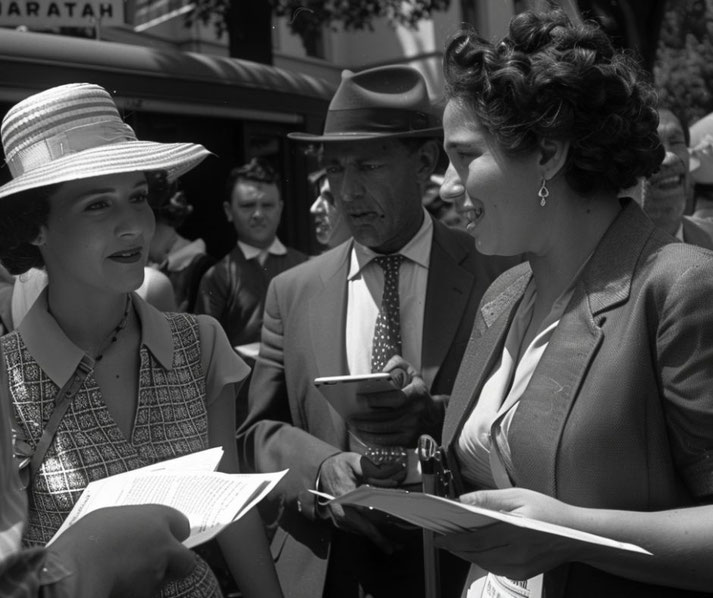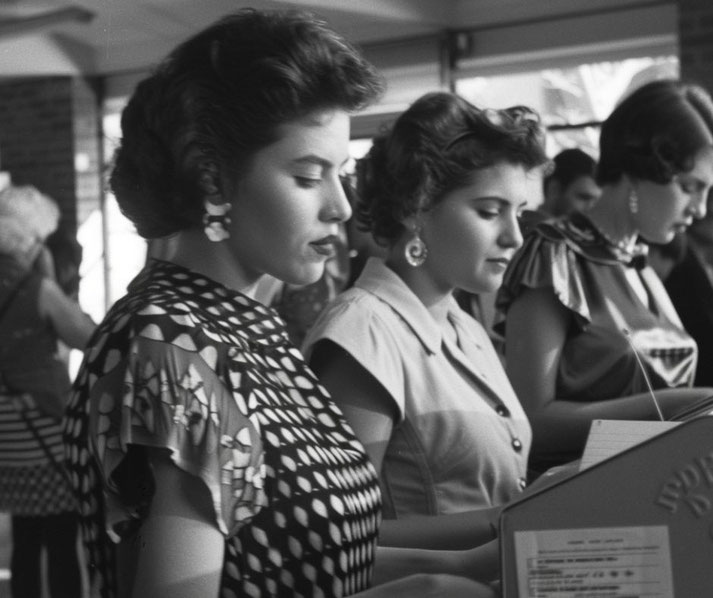What was the 1967 Australian Referendum?

In 1967, the Australian people voted in a referendum to recognize Aboriginal and Torres Strait Islander peoples in the Constitution.
This was a monumental moment in history, as it acknowledged the first peoples of Australia and paved the way for greater Indigenous rights and representation.
Background
For thousands of years, Aboriginal and Torres Strait Islander peoples lived across Australia and had a rich culture and unique way of life.
However, when the British arrived in 1788, everything changed. The British colonists brought with them their own laws and customs, which often clashed with those of the Indigenous peoples.
This led to many years of conflict, displacement, and violence.
With the establishment of the colony of New South Wales in 1788, British law began to be imposed on Indigenous Australians.
Colonial governors believed that First Nations people were subject to British law, even though they had their own laws and customs.
This proclamation set a precedent for the next 150 years or so, during which time Indigenous Australian people were increasingly subjected to British law and forcibly assimilated into white society.
In fact, First Nations people had different voting rights depending on the state or territory they were in before 1962.
For example, Indigenous Australian men in Victoria and South Australia had the right to vote since the mid-1800s.
However, they were excluded from citizenship and considered 'wards of the state'.
In addition, they were not counted in the national census and were not eligible for social security or other government benefits.
The Commonwealth Franchise Act 1902 granted women the right to vote in federal elections but excluded "all Aboriginal natives of Australia, Asia, Africa, or the Islands of the Pacific except New Zealand" from voting unless already enrolled (which applied in Queensland, Western Australia, and the Northern Territory).
Indigenous Australians in other states retained the right to vote, especially if they were male property owners or had served in the armed forces.
However, this exclusion applied to both men and women. As a result, this act introduced a property qualifying franchise, which meant that Indigenous Australian people who did not own property could not vote.
Calls for change
As an awareness of the inequalities faced by the First Nations people grew, people and organizations began forming to seek practical solutions.
In 1938, an event, known as 'The Day of Mourning', took place on Australia Day. It was a protest against the discrimination that Indigenous Australians faced.
It was organized by the Aborigines Progressive Association (APA), which was formed in 1937 to advocate for Indigenous Australian rights.
Then, in 1956, a group of Yarnangu people were discovered to be sick and malnourished in the Maralinga region in South Australia.
This region was used as a site for British nuclear tests, which led to widespread contamination fears among Australian citizens.
The tests released radioactive materials into the environment and raised concerns about the health and safety of local populations, particularly the Indigenous communities living in the vicinity.
When the public learned of the Yarnangu's condition, they were furious. This heightened awareness contributed to a broader conversation around the rights of Indigenous Australians and the need for political representation.
Formation of the FCAA
Building on the growing public awareness, the Federal Council for Aboriginal Advancement (FCAA) was created in 1958 to campaign for First Nations people's rights.
One of its key demands was for the removal of all laws, both federal and state, which discriminated against First Nations people.
It also sought to win full citizenship rights for them, including the right to vote.
In 1962, FCAA succeeded in having the Commonwealth Franchise Act amended to grant Aboriginal and Torres Strait Islander peoples the right to vote in federal elections, but this did not apply to state elections.

Bark petitions
In 1963, the Yolngu people of the Yirrkala community in the Gove Peninsula, Northern Territory, faced a devastating threat to their ancestral lands and way of life.
The Australian government had granted mining leases on their traditional lands without seeking their consultation or consent.
Determined to assert their rights and protect their land, the Yolngu leaders, guided by Mawalan Marika and his brother Mathaman, took a bold approach.
They crafted the Yirrkala Bark Petitions, which combined their traditional art and language with English text to emphasize their connection to the land and their rights under Australian law.
With the help of missionaries, the Yolngu leaders presented these petitions to the Australian Parliament.
This was the first time Indigenous Australians used the legal system to seek recognition of their land rights and cultural heritage.
The Yirrkala Bark Petitions captured the attention of the Australian public and lawmakers alike.
Despite the petitions' plea for justice, the Parliament's initial response was disappointing, as it failed to halt the mining activities or address the Yolngu's concerns.
Nevertheless, the petitions ignited a broader conversation about Indigenous rights and led to future legal battles, such as the historic Gove Land Rights Case.
Wave Hill Walk-off
Then, in August 1966, around 200 Gurindji, Mudburra, and Warlpiri people, led by Vincent Lingiari, staged a walk-off from the Wave Hill cattle station in the Northern Territory.
The protest was initially in response to poor working conditions, low wages, and mistreatment of Indigenous workers on the station, but it eventually evolved into a broader demand for land rights and self-determination.
The walk-off garnered nationwide attention and support from trade unions, churches, and other organizations, turning it into a symbol of Indigenous resistance and resilience.
The event highlighted the need for constitutional reforms to address the systemic inequalities faced by Indigenous people, including the lack of legal recognition and the denial of basic human rights.
The widespread public support for the Wave Hill Walk-off created a favorable environment for the 1967 referendum, which sought to address these issues.
The referendum
In 1957, a petition had been circulated by FCAA to change the Australian Constitution, and it gathered over 30,000 signatures.
Then, in 1965, Australian Prime Minister Robert Menzies announced a referendum to be held in 1967.
The referendum asked whether the Constitution should be amended to give Indigenous Australians the right to be counted in the national census, to allow the federal government to legislate specifically for them, and to receive Commonwealth benefits.
It also asked whether Aboriginal and Torres Strait Islander peoples should be included in Section 51 of the Constitution, which deals with race matters.
In addition, voters were asked whether Section 127 of the Constitution, which excludes Aboriginal and Torres Strait Islander peoples from the count of the national population, should be removed.
The referendum was held on May 27, 1967, and resulted in a resounding victory for the "yes" campaign.
More than 90% of Australians voted in favor of the amendments proposed in the referendum.
The changes to the Constitution that were enacted as a result of the referendum have been described as some of the most important in Australian history.

What was the impact of the 1967 referendum?
The 1967 referendum led to significant changes for Indigenous Australians. They were finally included in the national census and became eligible for social security and other government benefits.
The 1967 referendum is a reminder of the power of democracy to effect change and improve the lives of those who have been disadvantaged for too long.
It is important to note that while the referendum led to significant changes in the Constitution, it did not explicitly grant citizenship to Indigenous Australians.
The concept of Australian citizenship was established by the Nationality and Citizenship Act 1948, and the status of Indigenous Australians as citizens was not dependent on the 1967 referendum.
However, in the years following the referendum, efforts to recognize Indigenous rights and promote reconciliation have continued.
Land rights have been a significant issue, with the historic Mabo decision in 1992 recognizing Native Title for the first time in Australian law.
Despite progress, challenges remain in addressing the disparities in health, education, and socio-economic outcomes between Indigenous and non-Indigenous Australians.
What do you need help with?
Download ready-to-use digital learning resources
Copyright © History Skills 2014-2025.
Contact via email
With the exception of links to external sites, some historical sources and extracts from specific publications, all content on this website is copyrighted by History Skills. This content may not be copied, republished or redistributed without written permission from the website creator. Please use the Contact page to obtain relevant permission.





